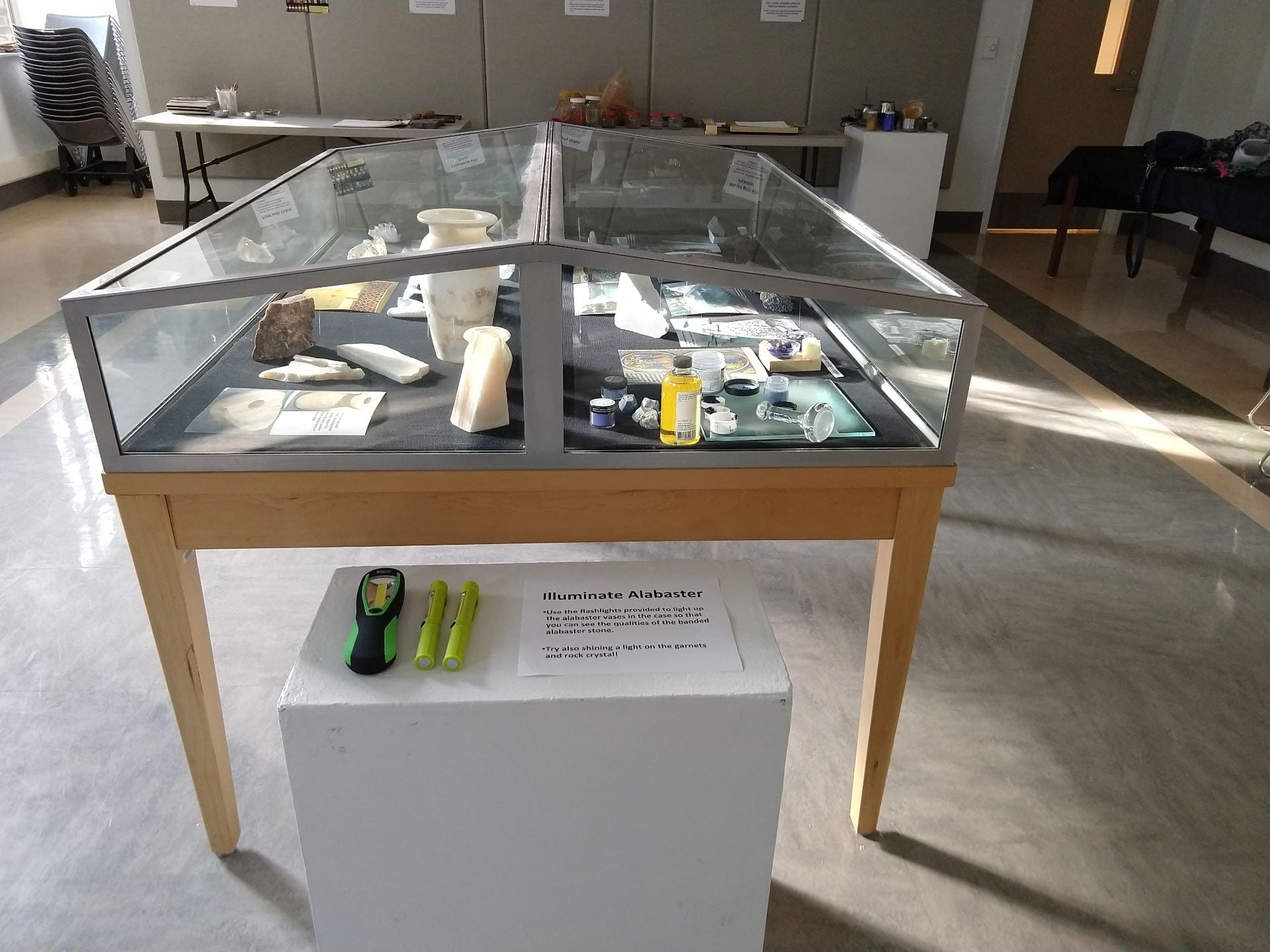
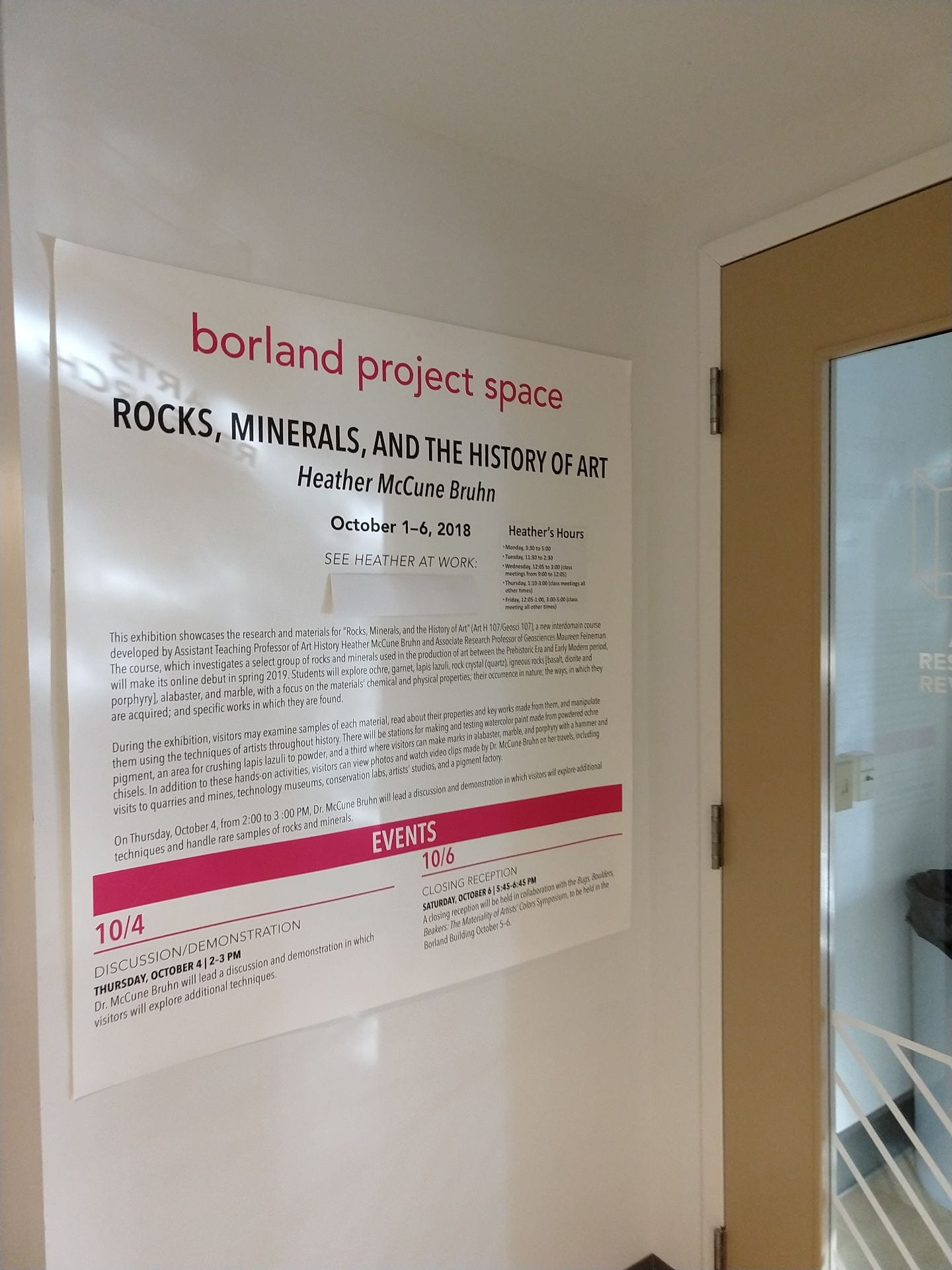
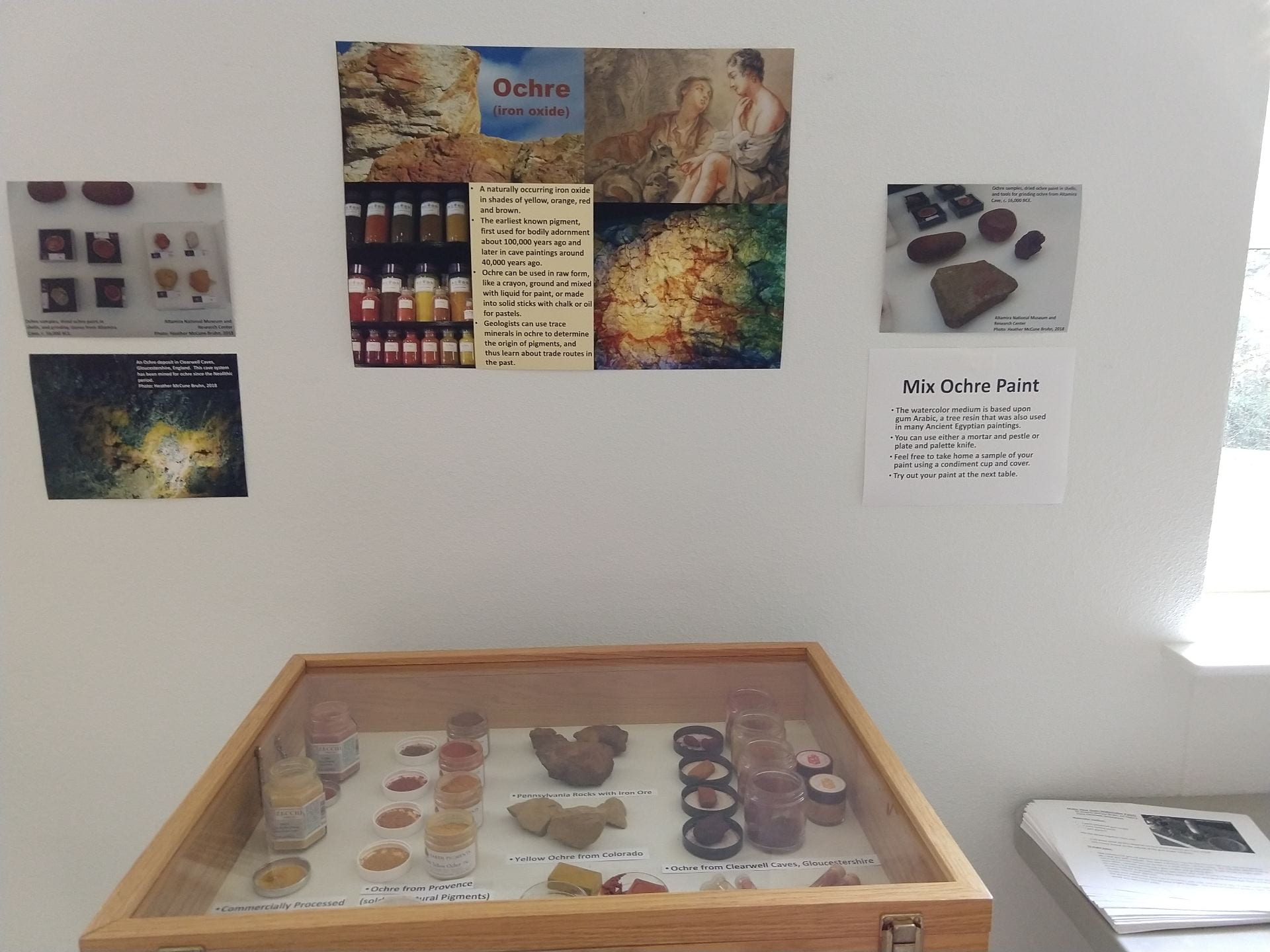
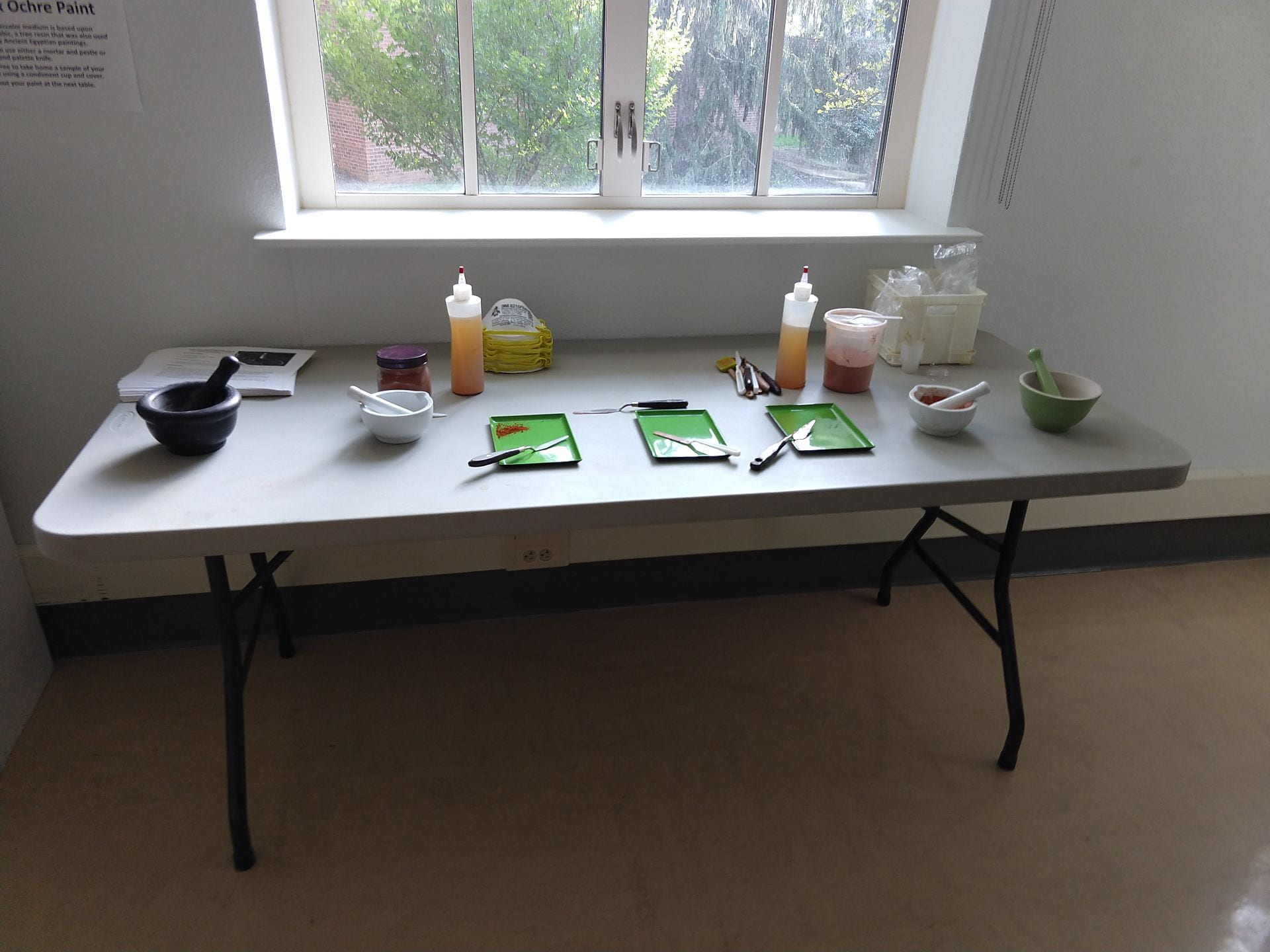
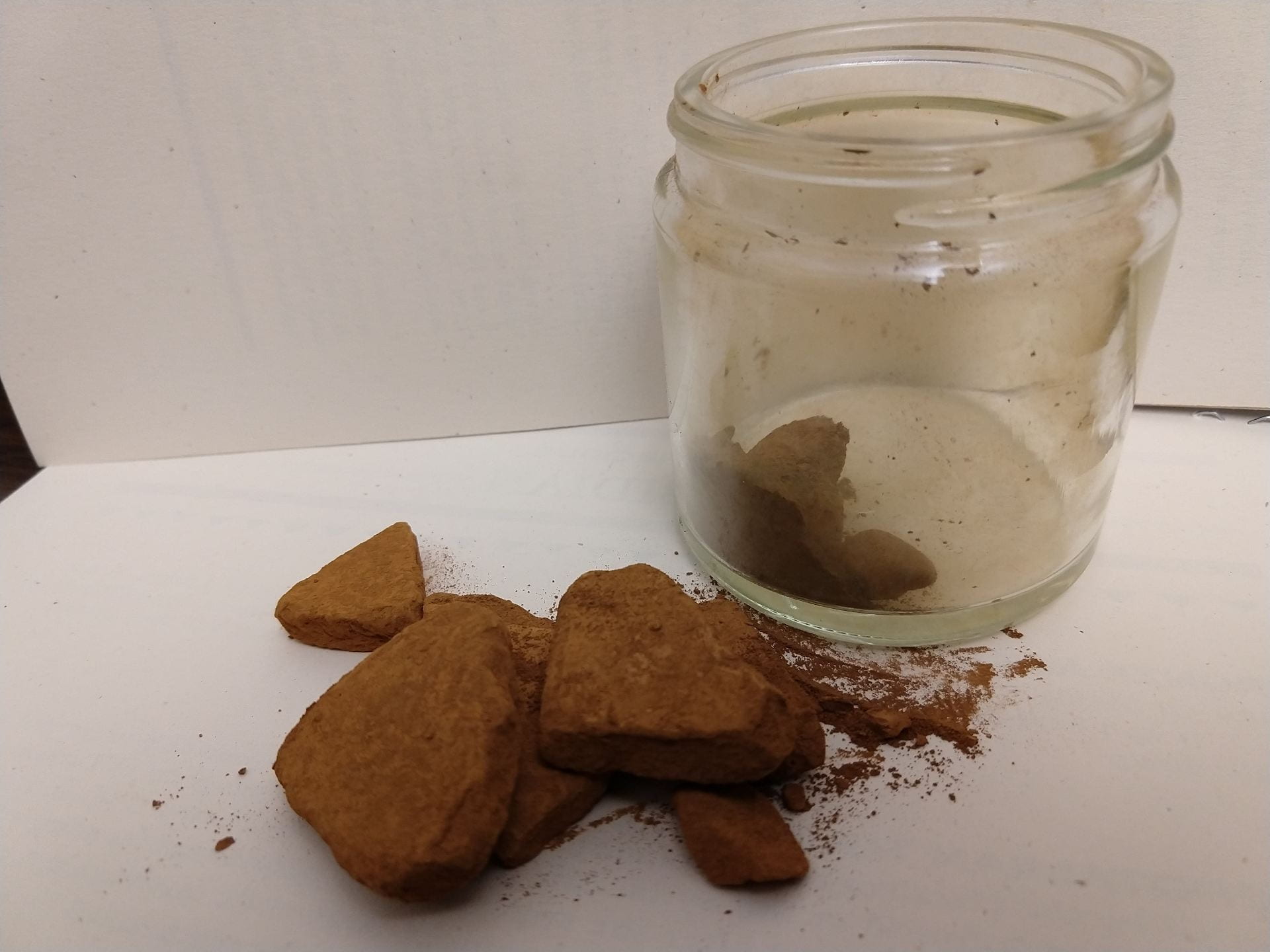
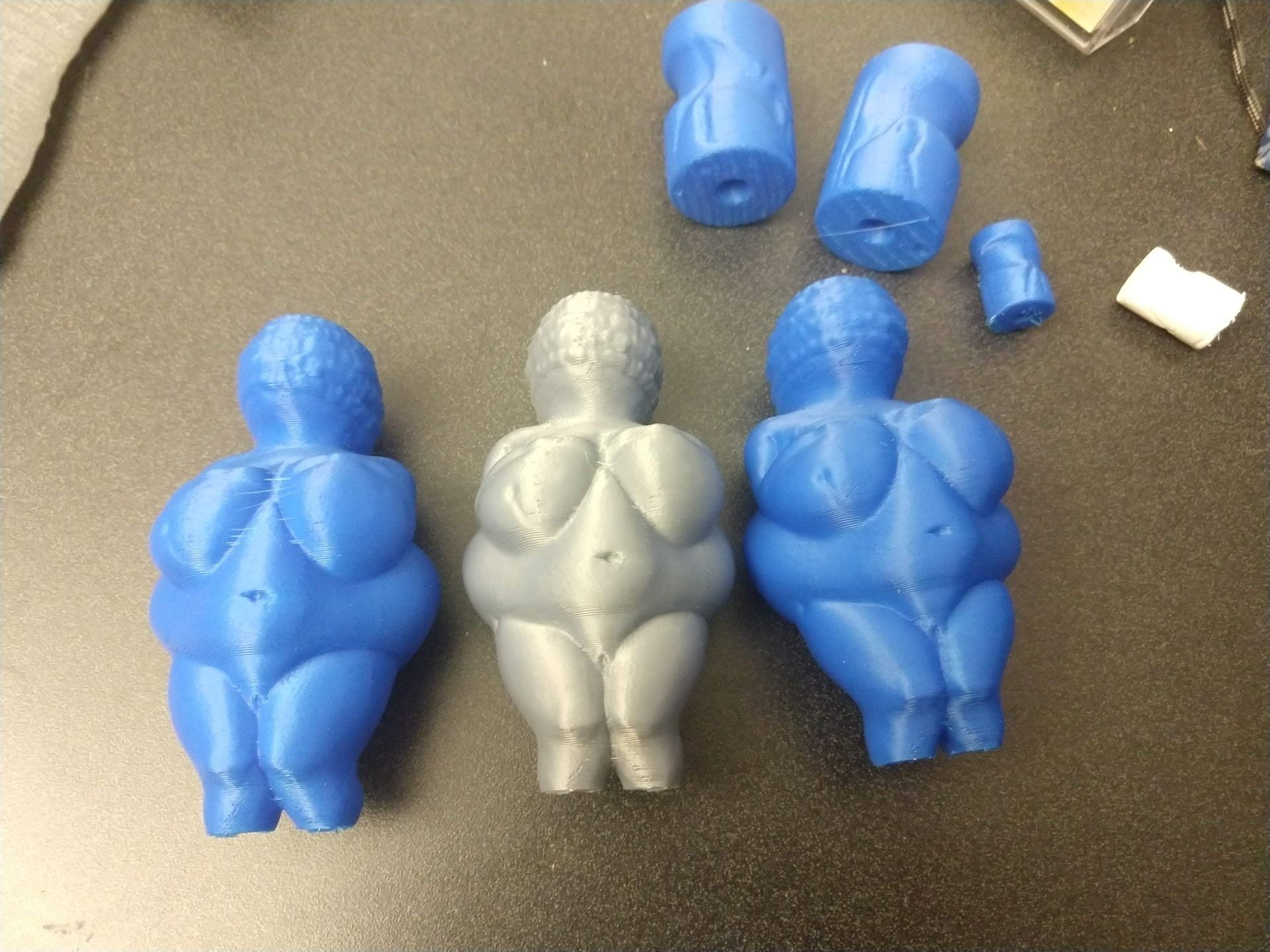
Activating the senses in the Art History Classroom
Heather McCune Bruhn
Introduction
In this short narrative, I will detail the ways in which I received two separate C-PAD Discovery Grants in 2018-19 and 2019-20, and the ways in which I was able to use the funds to improve my teaching. I experienced a great deal of success in bringing more hands-on experiences into my classroom, enhancing student learning by activating their senses.
The Initial Grant and its Intent
In November 2018, I was awarded a C-PAD Discovery Grant for my project, “Investigating the use of 3-D printed models in teaching art history surveys.” I had applied for financial support in large part because I knew a grant would force me to engage with something I had been thinking about, and give me a firm timeline. PowerPoint slides in the classroom tend to render everything in a similar scale, and even when you explain that something is a particular size, it can be difficult for the students to truly visualize. I also wanted my students to be able to touch something tangible in the classroom. Although we can’t handle 30,000-year-old works of art, it is possible to handle 3-D printed replicas of them. Prior to applying for the discovery grant, I had the help of the Teaching and Learning with Technology lab personnel in printing a replica of the Paleolithic Woman from Willendorf, a tiny limestone figure that stands just 11.1cm, or 4.4 inches inches high. Although my replica figure was slightly too large, it allowed me to witness the effect of handling a replica object on my students: they cradled her in their hands, and were suddenly aware of the importance of the intimate scale of the tiny figure. Their responses changed the ways in which they discussed the work in class! In my proposal, I requested funds to have 3-D models commissioned and printed, basing my estimates upon the cost of a spool of printing filament, and on the time required to scan new objects and create 3-D printable files. I also partnered with Jeff Beck, a member of the State High art faculty who teaches AP Art History. Jeff provided me with the list of works for the AP exam, and I identified ones that would be good candidates for 3-D models, with the understanding that I would provide them for Jeff to use in his classroom.
Once I received my award, I again reached out to TLT. I learned that I could do my 3-D printing for free, without purchasing filament, through the Maker Commons in the library. I worked with Ryan Wetzel, Trace Brown and Markus Furer. They helped me to realize that most of the material that I would use in my teaching was already available online, and the bulk of those files are free of charge. There were also potential issues with copyrighted files (as opposed to the freely available ones): I wanted to make files available to my students and colleagues, and the copyrighted for-cost files came with strict limitations. Once I learned how to scale a 3-D print to the actual size of the original work, I was able to start printing and experimenting in the classroom! I printed copies of the Woman from Willendorf to scale, a Mesopotamian cylinder seal in its actual size and doubled in size, and a Greek Tanagra figurine, among other objects. There were a few complete failures, too, and I learned some of the limitations inherent in 3-D printing. I consider the cylinder seal one of the most successful replicas, because it can be pressed into Play-Doh to create an impression. I provided at least 3 copies of each of the models I produced to Jeff Beck at the High School, and I hope they enhanced his coverage of the material in his AP Art History class. Not every lesson in my class had an appropriate printable model, but I was also able to discover purely visual models that could be moved and turned in a 3-D simulation, and I also used these to enhance my lectures. I’m looking forward to a post-Covid time in which I can start passing out these models again in the classroom. I am teaching an Honors section of Art H. 111 in Spring 2022 with only 20 students. I plan to once more feature my materials showcase, and bring in other selected materials and techniques throughout the semester.
Alternative Uses for the Funding
Once it was clear that I hadn’t needed any of the funding from C-PAD to achieve my goal, I started exploring alternative uses for the funding. I had been invited to be part of a teaching panel in Spring 2020 at the Medieval Academy of America annual meeting. The topic of the panel was “Teaching the Middle Ages to an Increasingly Diverse Student Population.” I asked for, and received, permission to use the C-PAD funds to cover a portion of my expenses for that trip. Covid-19 put an end to travel, unfortunately. Although I am still hoping to participate in the panel at some point, the sponsor group (Medieval Academy of the Pacific) hasn’t yet rescheduled.
Materials and Techniques Showcases
In 2019, when the call for Discovery Grant applications was due, I applied for funding to enhance my annual materials and techniques showcase for my students. When I applied for the funds, I had just finished holding a second Materials and Techniques showcase, and was looking for venues and funds to make this an annual occurrence. In October 2018, I held my first materials showcase for students in my Art History 111 course. This was a 1-week exhibition in the Borland Project Space to share my research for co-creating the new Art H/Geosci 107 course, “Rocks, Minerals, and the History of Art,” with Dr. Maureen Feineman from Geosciences. This interdomain course focuses on 7 different categories of geologically derived materials that can be used in the production of works of art, and we examine them first from a Geosciences point of view, and then look at Art Historical issues like economic and symbolic value, transformation into works of art, and key case studies of significant works that feature the materials. My exhibition in Borland Project Space, therefore, gave the public (and my students during their discussion section periods) the chance to handle samples of each material. For most materials there was the opportunity to interact, for example making watercolor paint with ochre pigment, scratching a piece of rock crystal or lapis lazuli with a diamond file, using a chisel on alabaster, marble and porphyry, exploring the color and translucence of alabaster and garnet with flashlights, and so on. The hands-on exhibits were accompanied by posters explaining each material and its significance in Art History, and photographs of some of the key works that appear in the case studies for our course. I also had videos playing on a loop that included conversations with experts (e.g. an ochre miner, the chief conservator at Altamira Cave, and curators from the Getty Villa). At the end of the week, I brought in each of my student discussion sections from Art History 111 (a total of 10 groups of 24 students each), and gave them the chance to interact with the materials. We also hosted the closing reception for a symposium on color and pigments that had been organized by Sarah Rich and Daniel Zolli in the space on the final evening.
In October 2019, I organized a similar materials and techniques showcase outside the Earth and Mineral Sciences Museum, this time just for the students in my discussion sections for Art H. 111. The museum kindly provided several tables and spaces in which we had many of the original activities (paint making, handling various materials, using hammer and chisel on alabaster, marble and porphyry, etc.). I also added a new activity: I had 3-D printed replicas of ancient Mesopotamian cylinder seals that the students were able to roll in Play-Doh, plus a wooden wedge-shaped tool for them to try pressing cuneiform characters into the Play-Doh. This new exhibit was a huge hit with the students! I also brought in samples of several pigments in raw form (safely enclosed in glass bottles) for the students to examine, and four examples of Medieval formulations of incense to prepare students for discussions of Christian churches and liturgical practices. Many of my students mentioned the materials and techniques showcase in SRTE comments in both 2018 and 2019. In 2020, due to Covid-19 restrictions, I adapted the materials and techniques showcase to become a series of short video demonstrations, adding a video in which my mother, a silversmith, demonstrates chase-repousse techniques, and a second video in which we dress my husband up in a peplos (a garment from Ancient Greece).
Improving the Materials and Techniques Showcase
My goal for the 2019-2020 C-PAD funding was to increase my offerings for the showcase and to establish it as a regular event every October. I proposed to acquire additional materials and learn new techniques not just for my Art History 111 course but also in my upper-level Medieval Art courses. Not only did I receive the funding, but I also secured permission to take the previous grant and apply it to the same goal. I taught a special topics course, The Medieval Treasury, in Spring 2020. Using C-PAD funds, I was able to obtain samples of gold, silver and copper ore for use in a discussion of mining and refining metals, a chalice for discussions of church liturgy, and samples of both chase-repousse metalwork and enameled metal. I also purchased a card-weaving loom to demonstrate early weaving techniques, and samples of parchment that students could handle when we visited Special Collections to examine manuscript leaves. I had plans for a few other hands-on items for students to handle and plans to visit artists practicing certain techniques. Unfortunately, Covid-19 interfered, and we shifted entirely to online instruction and travel became impossible. I still had most of the C-PAD funding left to spend, even though I had managed to acquire several new items for my showcase. Finally, I received permission to use the remainder of the funding to commission a coin-striking kit for students to be able to create their own replicas of an ancient Persian coin. I contacted Michael Stewart, the owner of Quick Silver Mint in California, and he provided me with all the materials for making pewter coin blanks and striking coin blanks with a custom-engraved copy of the Persian Daric. This is a coin that receives a great deal of attention when I teach Art History 111, because it is the earliest known example of a coin being used for propaganda purposes (it allowed a very particular image of the ruler, Darius, to be spread throughout the Persian Empire). I haven’t had the chance yet to use this kit with students, but I have used it at home, and I look forward to trying it out with my students in my Honors section of Art History 111 in Spring 2022.
Conclusion
Although there were many twists and turns along the way, all of the activities I performed and items that I purchased using my C-PAD funds served the same general goal: engaging the senses. Students in lecture classes don’t often have the chance to have real encounters with visual art. Instead, they are often limited to experiencing works in a PowerPoint on a lecture hall screen. Early in my teaching career, I began to bring in samples of stone for students to handle during discussions of architecture and sculpture. I also tried to demonstrate, using my hands or comparison objects, the size of various works under discussion. 3-D models, therefore, were a logical next step. The tangibility of 3-D printed models makes them a wonderful addition to a lecture, allowing students to link an experience to the information in their notes. Similarly, smelling incense, hearing Gregorian chant, and handling a chalice can help students to better understand concepts that I cover when we study Medieval Christianity. Thanks to C-PAD, I now have a library of objects and materials that I can bring in to a classroom or a Materials and Techniques showcase to illustrate and enhance my teaching, and I look forward to increasing this collection in the future.